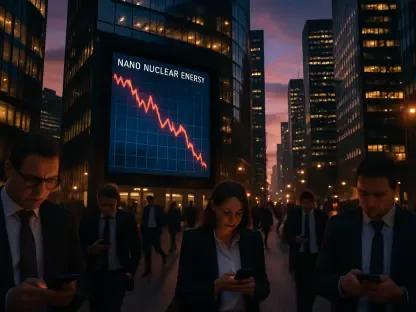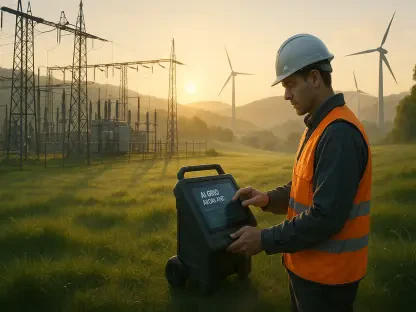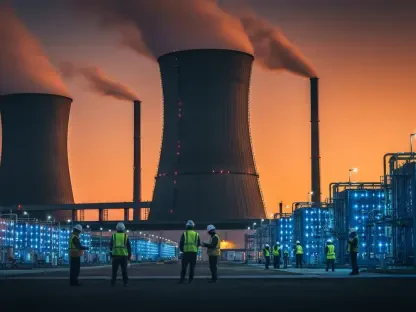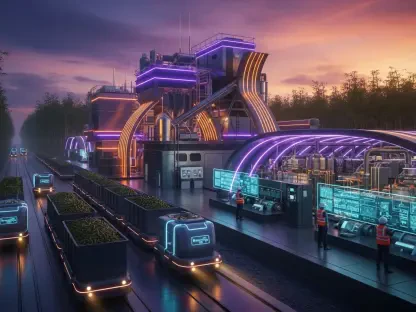The race to total energy transition is speeding up. From factory floors to boardrooms, electrification efforts for buildings, fleets, and industrial operations have become a top priority for corporate climate strategies. While the directive to electrify everything is backed by policy mandates and industry incentives, the journey from fossil fuels to electrons is more complex than expected.
As companies climb toward a cleaner future, many are falling susceptible to the struggles of operating with infrastructure limits and reality gaps that throw sustainability ambitions out of sync. Without the necessary groundwork, logistical and operational risks impede progress. In this article, you will explore how grid capacity, global transformer shortages, and regulatory setbacks are hindering industries from embracing the change.
Demand Overpowering Supply
Imagine a major manufacturing company that wants to electrify its heating operations to comply with green transition goals. Their plan is to replace gas-powered boilers with electric heat pumps. However, the reality is that it necessitates a $2 million grid upgrade with an 18-month timeline before systems can be connected, hindering operational progress.
Unfortunately, this is not an isolated scenario; it’s a growing concern that puts organizations under greater pressure to accelerate electrification processes. The core issue lies in the design of local distribution grids.
Traditionally, these grids were engineered to power a handful of factories or residential homes using power consistently. However, as modernization propels electrification forward, the demand for high-intensity electric loads—like the integration of distributed renewable energy sources and electric vehicle charging stations—has increased significantly. This sudden surge can inundate existing systems and result in potential blackouts and capacity challenges.
South Africa’s Energy Crisis
One example is the energy crisis crippling South Africa’s economic growth and social development. As the country’s electricity monopoly, Eskom is currently undergoing a serious power generation capacity shortage. In 2022, South Africa experienced the worst of this situation with 205 days of rolling blackouts, known as load-shedding, whereby citizens experienced up to 10 hours a day without electricity, with the colder seasons prompting outages to jump up to 16 hours. From an economic standpoint, a long-term solution is an urgent necessity to circumvent the $51 million daily loss.
Elevated Energy Demands
The problem isn’t simply not having enough power; it’s about how and when it’s used. Without load flexibility or sufficient storage, grids cannot cope with the increasing demands. For example, one electric vehicle charger results in triple the average electricity consumed by a single household. Additionally, as different sectors continue down the path to electrification, countries like Germany are expecting a 190 TWh energy demand increase by 2030. This misalignment between energy supply and demand exacerbates grid strains.
To sidestep these obstacles, more enterprises are embracing solutions like smart charging and demand-side management. Adopting these approaches can help balance the load while stabilizing grids, even as electrification efforts accelerate. However, it also calls for significant cost and time investments, further blurring the boundaries of a fully electrified future.
The Bottleneck No One Planned For
Even if the grid could handle new load demands, there’s a second significant issue that often flies under the radar: the critical hardware required to connect everything is also in short supply. As the key component to converting medium-voltage electricity into usable levels, the distribution transformer supply is drastically decreasing. Adding fuel to the fire, lead times for implementing this essential equipment can stretch over several years, causing massive bottlenecks in the electrification process.
Without these transformers, businesses cannot expand their operations to accommodate the greater need for electrification across industries—bringing them to a standstill. The question is: What is causing this damaging delay?
Transformer Material Shortages
From electrical grade steel to winding material, many critical transformer components are becoming more expensive and are being lost to massive backlogs. In terms of the former, certain incentives in the Inflation Reduction Act allocate transformer manufacturing steel to electric vehicle charging applications. This is causing project managers and electrical distributors to shift from their build-to-order mentality toward more adaptable sourcing strategies.
Natural Disasters
Extreme weather events, such as hurricanes and wildfires, contribute to the loss of distribution system transformers. After experiencing two hurricanes, Duke Energy needed to replace nearly 16,000 transformers—that’s more than what other utilities order in a year. Extreme temperature rises also add major strain when customer demand skyrockets. This eats away at operating efficiency and transformer lifecycle expectancy.
The Cost of Raw Materials
Since January 2020, the cost of transformers has jumped by 80% on average as commodity prices for raw materials have doubled. This is because demand for the production of these materials was expected to decrease during the pandemic, but this was not the case. As a result, manufacturers are under significant pressure to accelerate production to catch up with global demand. While these costs have eased over the past year, transformer costs continue to soar as suppliers face the same demands and lead time delays.
Policy Ambition vs. Reality Gaps
Speaking of time constraints, the pace of regulatory adaptation is falling behind policy pursuits. Bold electrification targets are being set without the proper resources to modernize infrastructure. In New York, a new mandate is pushing for buildings under seven stories high to be electrified by 2026, however, there are strong warnings that the state’s electricity grid is not sufficiently prepared for the expected increased demand. Current buildings also already leverage natural gas for heating and cooking, adding a new layer of complexity to the transition.
Similarly, the United Kingdom government is facing major time delays in its endeavors to achieve a net-zero economy. This setback has compromised its energy security as plans are slowed down, and critical infrastructure projects fall to the wayside. In Fort Augustus, reinforcement projects for the Skye transmission line had been hampered, reducing electricity supply reliability.
Policies calling for rapid urbanization in the global south by extending electricity grids affect its already limited infrastructure capacity—where 940 million people have minimal access to affordable, reliable, and sustainable energy. This is because there is a reality gap between policymakers and social expectations, which threatens the sustainability of urban energy transitions.
This disconnect can also be seen in electric vehicle mandates in the trucking industry. According to research by the American Transportation Research Institute, renewable diesel can be adopted at a fraction of the cost and holds a smaller carbon footprint compared to battery-powered electric trucks, rendering these mandates counterintuitive. One would think that driving optimal decarbonization efforts should unlock the greatest environmental benefits with the lowest expenses. In reality, electric vehicle mandates accomplish neither, while also boosting inflationary consequences over decades.
Conclusion
The call to electrify everything is ringing louder than ever, but beneath the buzz sings a quiet truth: The world is headed into an electric future while running on infrastructure designed for the past. From grid systems not equipped to hold the weight of electrified societies to policymakers issuing mandates faster than industries can respond, energy transitions are fracturing, and businesses are facing the consequences.
It’s not just progress that’s at stake. When electrification is more of a policy checkbox than a well-considered system shift, ambition leads to disruption—where time delays and overruns cripple credibility. The core issues stem from misaligned regulation, resources, and market forces that cause scaling technology to stumble. The reality of total electrification poses a risky paradox as it is a solution to climate change that is slipping under its own momentum.









